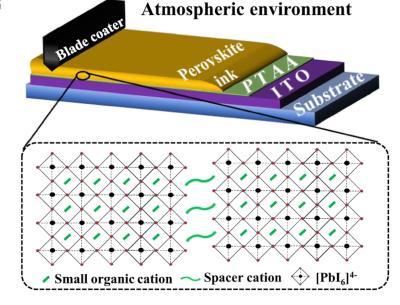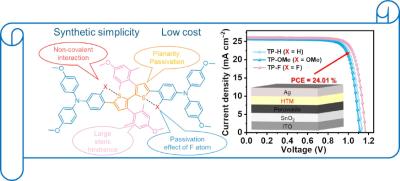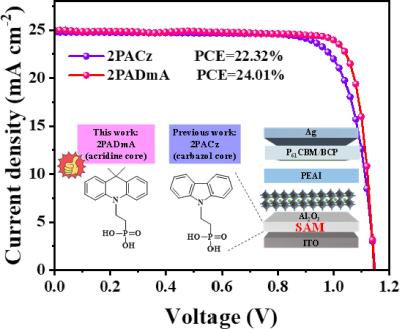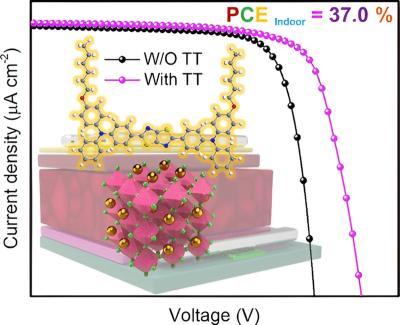Researchers use ultrastable and efficient 2D Dion-Jacobson perovskite for solar cell with 19.11% efficiency
Researchers from China's National Center for Nanoscience and Technology, Chinese Academy of Sciences (CAS) and Beihang University have demonstrated a series of ultrastable Dion−Jacobson (DJ) perovskites for photovoltaic applications. They went on to develop a 2D Dion-Jacobson (DJ) perovskite solar cell that showed high stability while achieving a power conversion efficiency of 19.11%.
Schematic illustration of the blade-coating film and the corresponding device configuration under atmospheric environment at room temperature. Image credit: Nature Communications
Two-dimensional (2D) Dion-Jacobson (DJ) phase perovskites have drawn attention from academia due to their stability against harsh environmental conditions and their competitive performance in optoelectronic applications. Solar cells based on DJ perovskites, however, have so far shown comparatively poor performance compared to their 3D counterparts.







